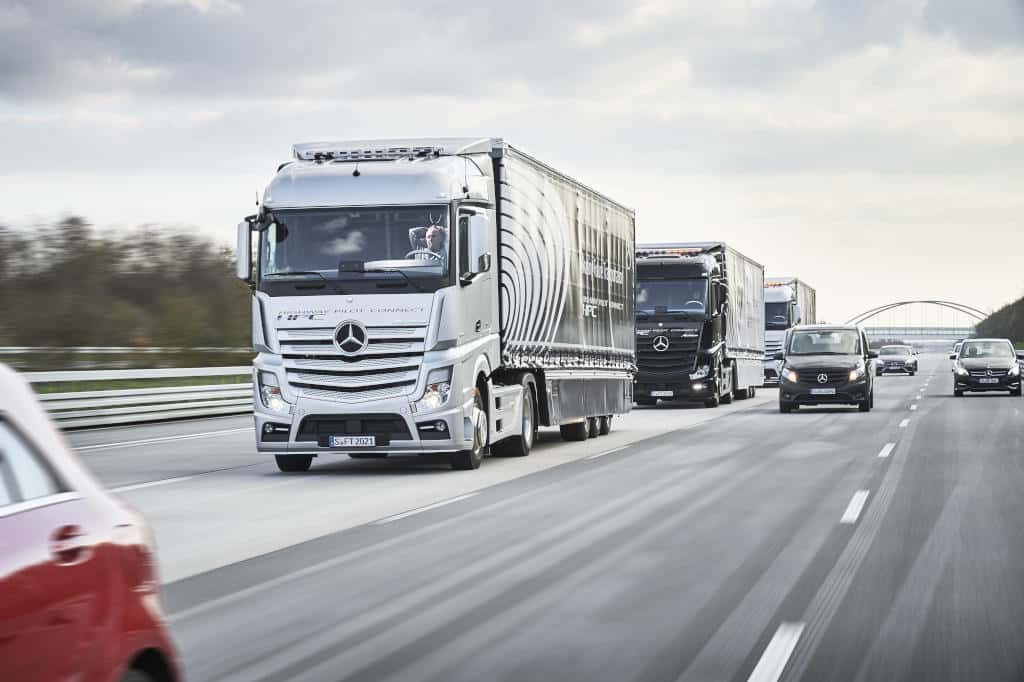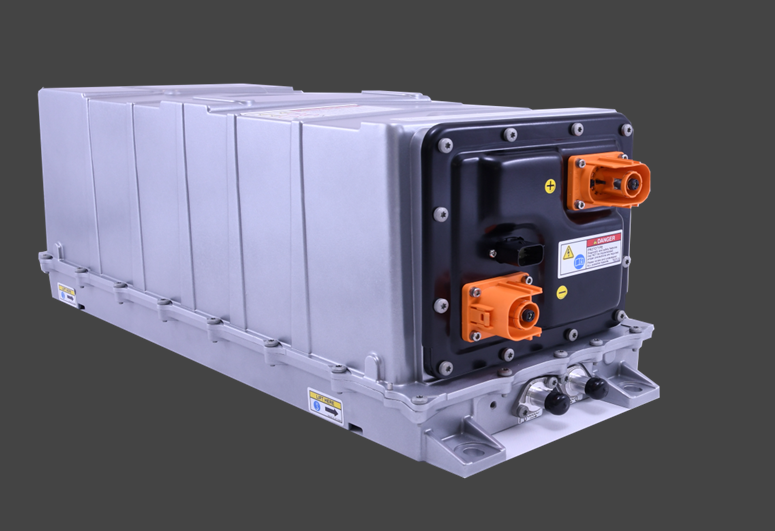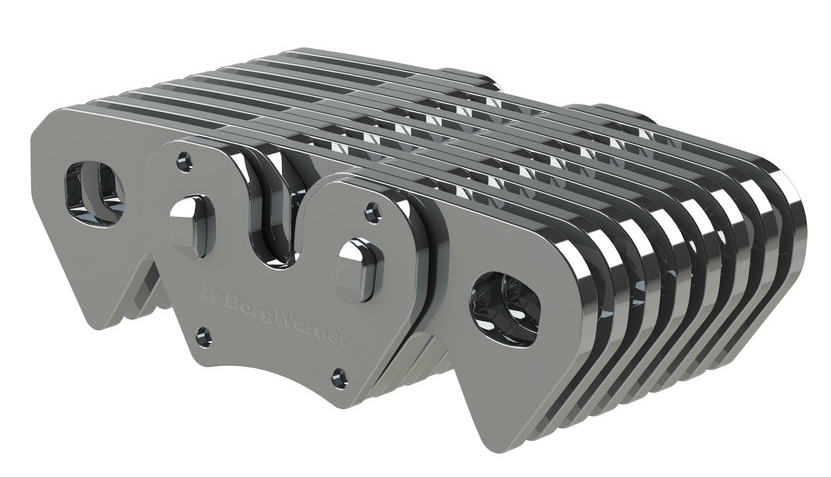Daimler Trucks has announced that it will invest $564 million over the next five years in an effort to advance connected truck technologies, including autonomous multi-truck “platoons” connected by WiFi. With over 400 sensors and 100 million lines of computer code, the new autonomous trucks can not only drive themselves, but also avoid accidents and traffic jams while minimizing downtime though preventative measures, according to Daimler.
Called the Highway Pilot Connect system, Daimler’s platooning system saves both fuel and road space, closing the average distance between trucks from 50 meters to just 15 meters, according to the automaker. Highway Pilot Connect builds on Daimler’s Highway Pilot autonomous driving system, introduced last year. By staying in close formation, trucks at the back of the platoon benefit from reduced aerodynamic drag by driving in the slipstream, improving both fuel economy and reducing emissions by about 7%.
The reduced road space required for a platoon of trucks will also benefit other drivers. Daimler says a platoon of three of its connected trucks require just 80 meters of road space, compared with about 150 meters for non-connected trucks. Despite reduced braking distances, Daimler claims its connected trucks can apply the brakes in just 0.01 seconds, compared with an average of about 1.4 seconds for a human driver. The fast reaction times could translate to significantly reduced incidents of rear-end collisions.
“The smart, self-optimizing truck has the highest priority for us,” says Sven Ennerst, head of truck product engineering and global procurement for Daimler. “Using connected communication between the truck and other vehicles and the surroundings, we can improve traffic flow and lower fuel consumption and emissions. At the same time, intelligent trucks help to lower the number of traffic accidents. This is an important step on our way towards accident-free driving.”
Each member of an autonomous truck platoon can also react and operate independently should the situation require it, says Daimler. Should another vehicle enter the space between two platooning trucks unexpectedly, the truck will automatically adjust to the situation without driver interference. The trucks operate on a WiFi band set aside exclusively for autonomous vehicles, and Daimler is placing a high value on data security in order to protect drivers, vehicles and their cargo.
Daimler has been testing its truck platooning technology on European highways since 2015. Daimler’s Highway Pilot autonomous driving system has been approved for use throughout Germany, and the Highway Pilot Connect platooning system has received approval for use on select roadways.







